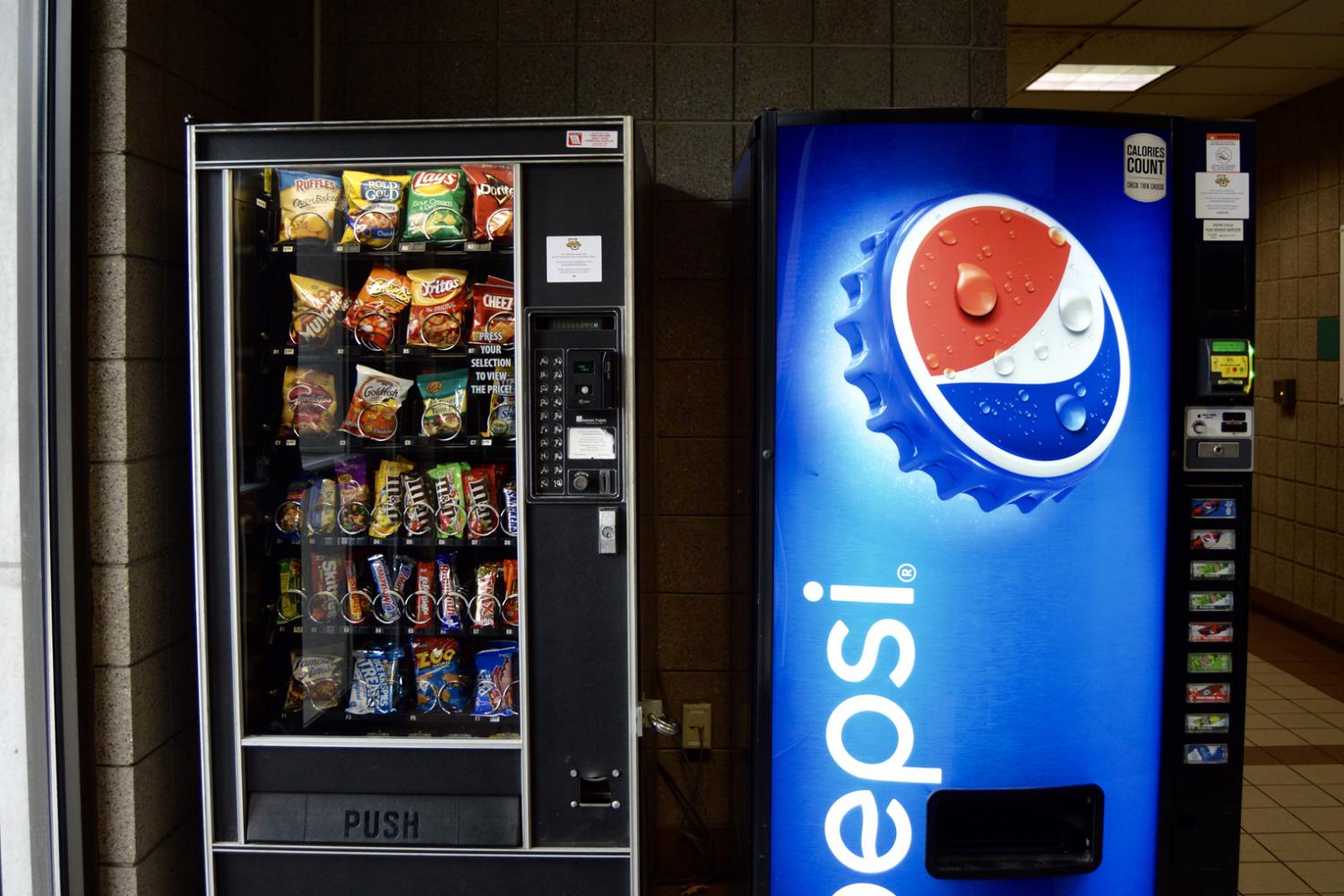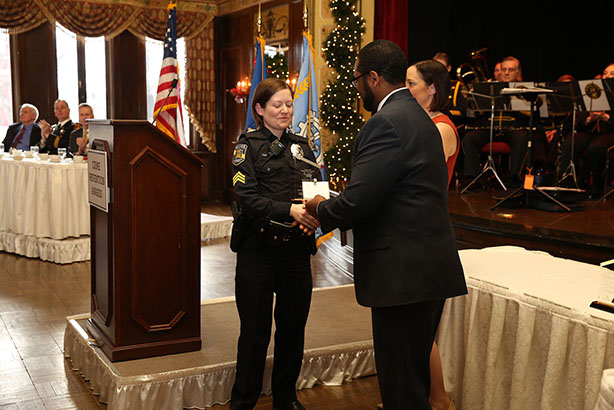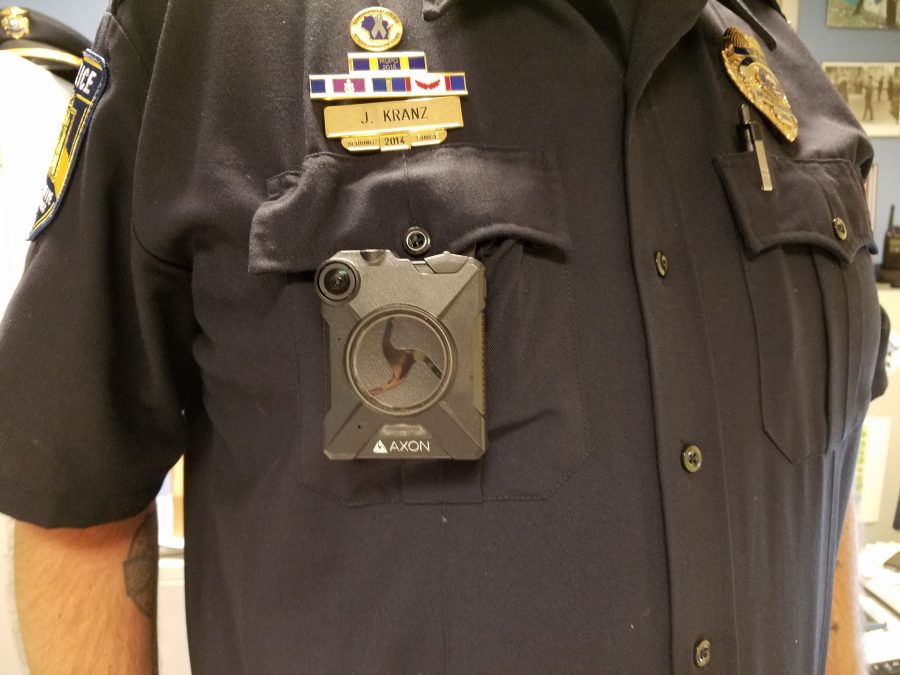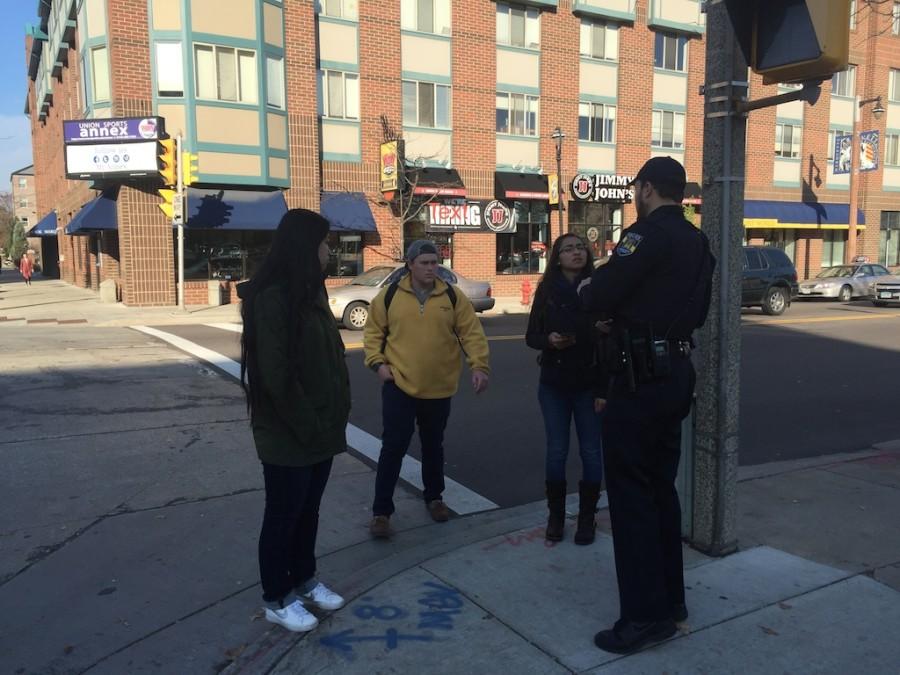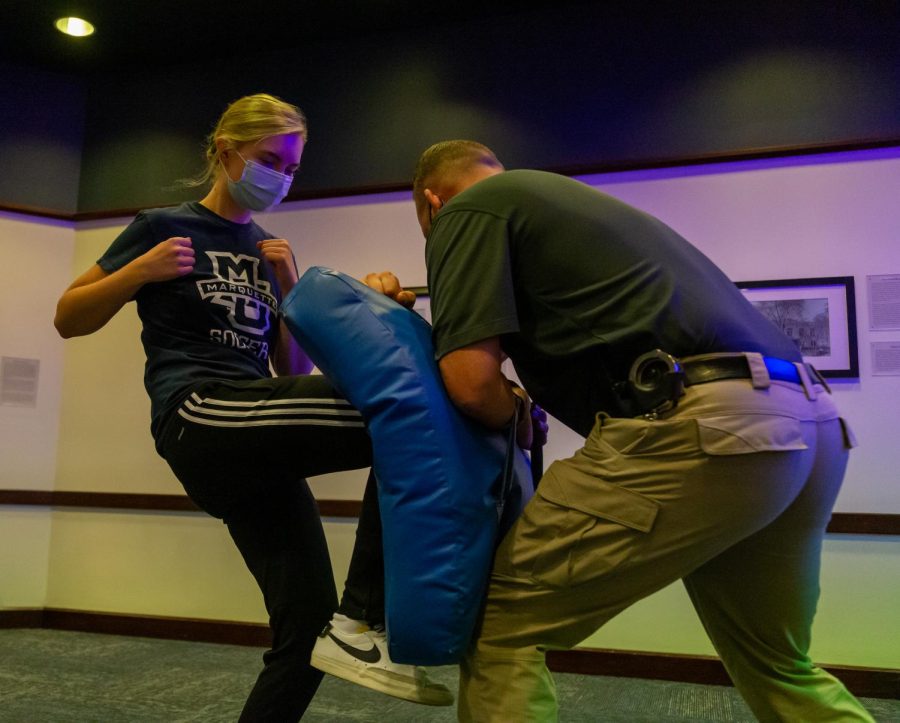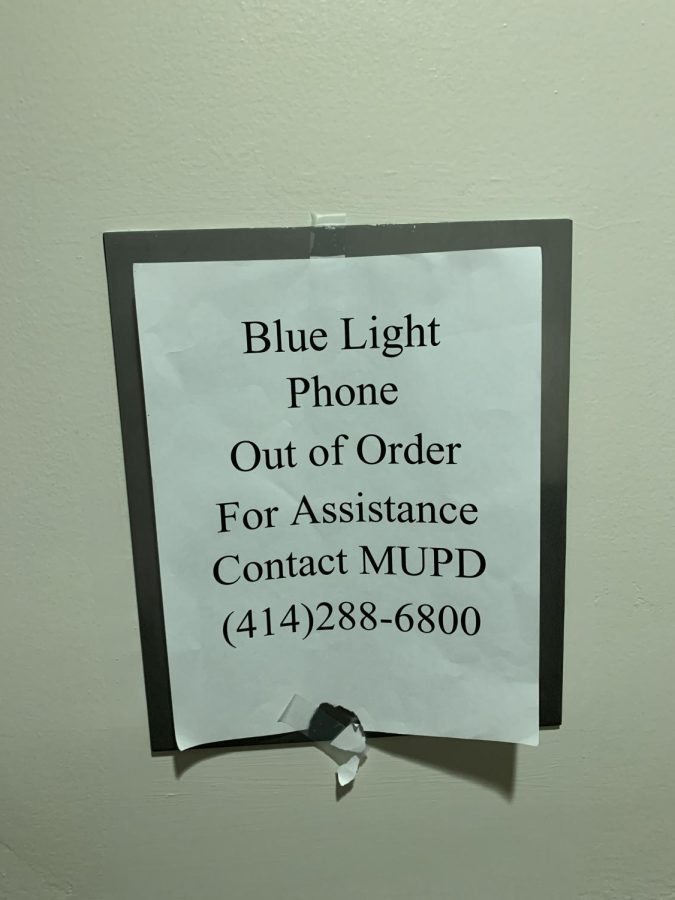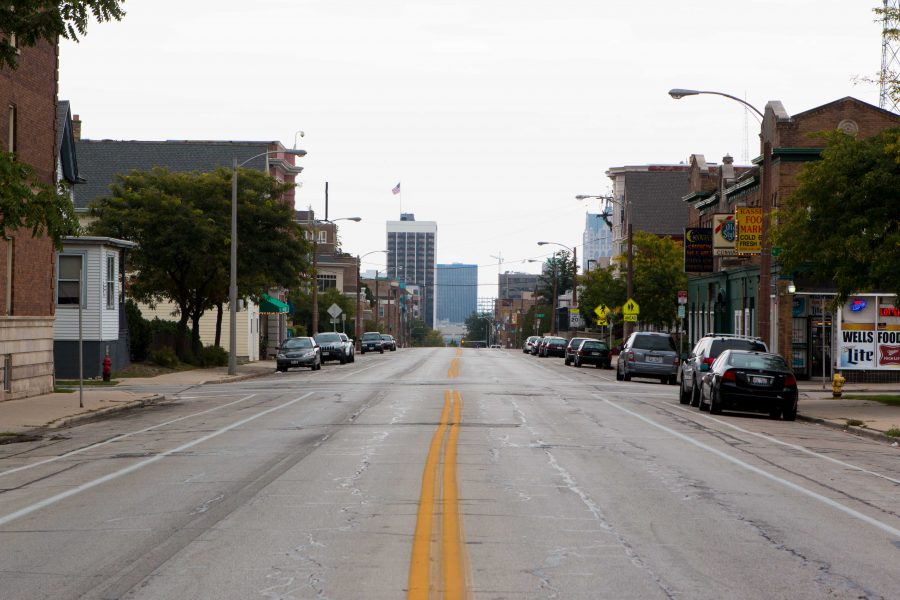The Marquette Police Department increased its number of traffic warnings and citations after receiving an $8,000 grant in October for pedestrian safety programming.
Since the grant was implemented, MUPD issued more than 45 citations, more than 180 warnings and cited some students for jaywalking. The grant was issued by the Wisconsin Bureau of Transportation Safety and pays for officers to specifically focus on pedestrian safety work without having to take other calls.
The pedestrian safety work involves an officer, dressed either in a police uniform or street clothes, going to a crosswalk while other officers in a squad car park near the area. The officer is usually MUPD Sgt. Carrie Peters, who then presses the crosswalk lights to indicate her presence and walks across the street. If the cars don’t slow down or stop for her, the squad car comes out and stops them.
If cited, the driver is required to pay $250 for failure to yield to a pedestrian in a crosswalk. Peters said there’s not a problem with drivers refusing to slow down as much as there’s a problem with educating drivers about the law. She said some people she stopped were unaware that they didn’t have the right of way.
Peters said this work provided baby steps toward a safer campus, although “we have a long way to go.” Three students have been hit by a vehicle since October, including an incident on Feb. 23.
MUPD is using the grant to focus mainly on driver error since an inattentive driver presents a greater possibility for danger than a jaywalker.
“(Accidents are) a lot more damaging for the pedestrian than (they are) for the car,” MUPD Chief Paul Mascari said.
Peters said five other officers regularly volunteer to do the work, noting that they’re usually “eager and enthusiastic” about it. She schedules one to five outings per month, fewer when school is not in session. Each outing is three hours and requires three officers, one walking and two in the car.
MUPD Officer Brian Larson has done the work and noticed “how severe a lot of our pedestrian (issues were,) so when we got the opportunity to spend extra time focusing on that, it drew my attention and was something I was interested in working on.”
The officers usually target a crosswalk in the middle of campus that has heavy foot traffic. They’ve done the one outside their offices at 749 N. 16th St. and the one outside the Rec Center at 525 N. 16th St.
MUPD typically performs a traffic stop around every 17 minutes during each outing. Larson said, “It’s pretty rapid fire.”
Peters said students sometimes ask what is going on during a traffic stop, which provides officers an opportunity to educate them. She said this is another benefit since it allows MUPD to “reach so many people who aren’t directly involved in the project.”
Even when dressed in a neon safety vest, Peters said she has almost been hit by a car that refused to stop.
“Whether it’s that (drivers) don’t know or they don’t care, it’s really scary,” she said.
However, MUPD is optimistic about the work it’s doing.
“I’ve seen progress,” Peters said. “Being the decoy, I think it’s much more difficult to have those close calls than it used to be.”
She said vehicles rarely used to stop at the crosswalk in front of the MUPD offices, but now “probably 60 to 70 percent of the time, people are stopping.”
When it comes to the future, Peters said she’d like Milwaukee to emulate the pedestrian and biker safety in Seattle or Madison. Mascari said he wants “the campus area to have a reputation of being strict on enforcement of traffic laws because that benefits the safety of everyone.”



